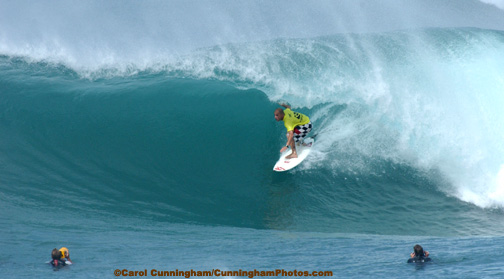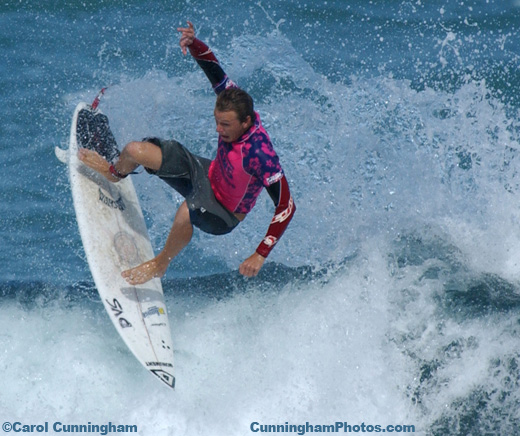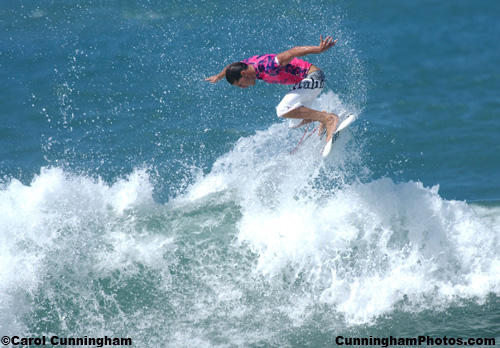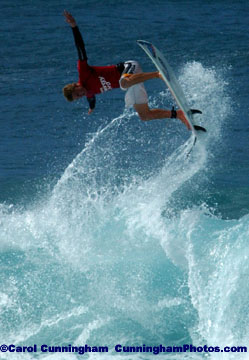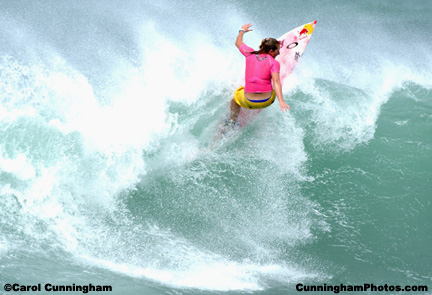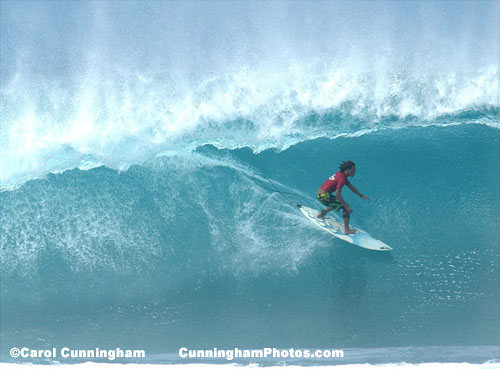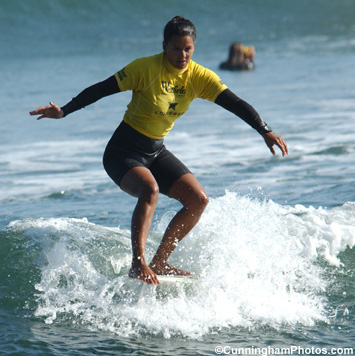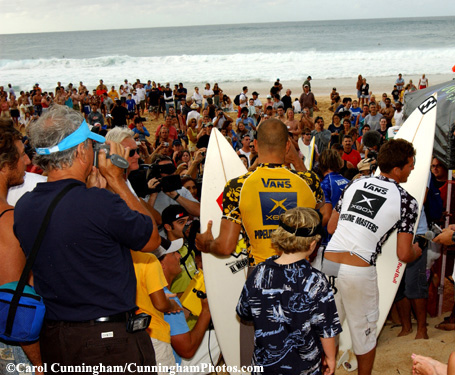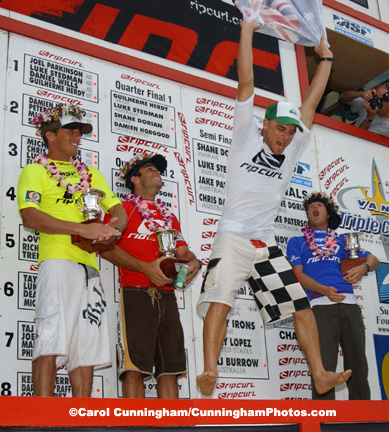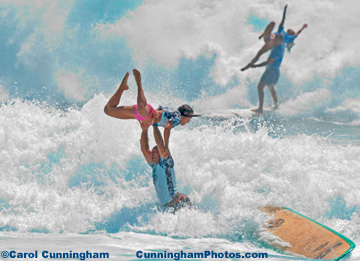
Surfing Photography by
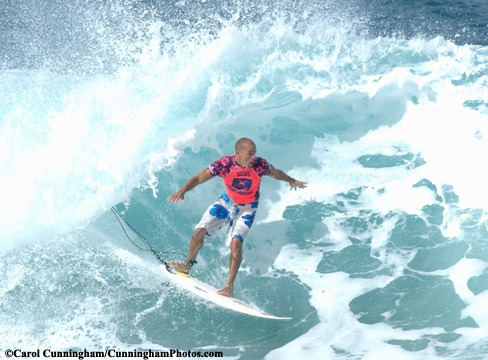
There is nothing like surfing photography. It requires stamina, timing, a strong back, and lots of sunscreen.
Although trained as a news photographer, since moving to Hawaii, I have specialized in championship surfing competitions.
As a freelance photographer, I have had the opportunity to work for newspapers, the Associated Press, magazines and websites around the world, Quiksilver, and the Vans Triple Crown of Surfing.
During the winter competition season, I am on-call every day. On those days when the surf is right, my day starts before dawn when I drive to the North Shore of Oahu. The competition generally last 8 straight hours, with no breaks. As soon as one group of surfers finishes their heat, the next group is ready to ride. My day ends around 11 pm, after I've transmitted my photos to news organizations and websites around the world.
Because of the need for rapid distribution of my photos, I shoot digitally, using a set of Nikon D1X cameras. One is on tripod with a 600mm Nikon lens, with or without a 1.4 Nikon Teleconverter (which makes it the equivalent of an 840mm lens).
For some competitions, I use a handheld 80-400mm zoom lens.
I also keep a camera on my shoulder with a short 24-85mm lens.
It is essential that both cameras be set to the exact same date and time. At the big competitions, the press office provides an updated "draw" or heat sheet to show which heat each surfer will be in, and what color he or she will be wearing. Because of the distance and the erratic lighting, this is the only way to be sure which surfer you have. As each heat begins, I make a note of the exact time and any changes in the schedule.
Between heats, I turn the camera to a completely different scene (usually a palm tree), so that I can easily find each new heat when I'm looking through the day's photos.
I shoot 200 - 2,000 photos per day. Some of them I download to my computer right there on the beach, transferring them to a CD-ROM that is then given to a webmaster who puts them on the internet within minutes. Others I transmit to news organizations, via FTP, using a Verizon Air Card in my computer.
As you might imagine, the elements pose a major challenge. I use lots of plastic sheeting and towels -- on my computer and around my lenses. The heat can be intense, the liquid sunshine (AKA rain) occurs off and on during the day, and the salt can be the biggest problem. Tiny bits of salt can get into the lens, between the pieces of glass, or into the camera where they bunch together and puts spots on the CCD. Cleaning and maintenance costs are part of each year's budget.
Shooting surfing requires constant adjustments. I generally shoot at 1/1250th of a second, f6.3-f7.6, ISO (ASA) 400, with a compensation of +.03 to +1.3. But all that changes every 3-5 minutes. I find shooting with everything on manual gives me better results. There are changes to analyze all the time. The sun may be shining or partly covered by clouds. The surfer may be dark and shaded in the Banzai Pipeline, but moments later he shoots out into brilliantly white foam.
The ideal shots come when the sun is on the surfer, the white water is at a minimum, and the wave is thin enough to let light stream through. And, the surfer is executing an unbelievable maneuver.
Since there's no way of predicting when that will happen, I shoot almost non-stop, many times taking 5 shots per second. I focus on the surfer's hip, since generally by the time the shot is taken, the rest of his or her face will be in that same focal plane.
Meanwhile, I use the camera with the shorter lens to capture the up close and personal shots of the surfers as they report to the competitors tent, or get carried from the surf by medics or fellow surfers.
Because the camera clocks are in sync, I am able later to merge all the day's photos into one computer file, sort them by Time Shot and identify each photo.
Although it's hard work, I find myself grinning each time I hear, "Surf's Up!" And if you're ever standing next to me at the beach, you'll hear me, above the roar of the waves, and the click of the shutter, proclaim, "I love my job!"
Carol Cunningham's photos can be viewed (and purchased) at
www.CunninghamPhotos.com
